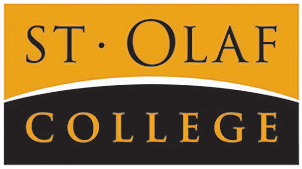Asian Studies 200: Charting Courses
Using a Google Sheet and ArcGIS Online – we will create a map that will show the progress of points (data) over time.
- Data should progressively appear on the map
- At the end of the time bar, all data is present on the map
The map will be added to a Story Map in order to be combined with additional content. Resources, videos, and additional guides are linked throughout this course page. For any questions, feel free to contact Sara Dale (dale1@stolaf.edu) to set up a meeting. I am also available on Google Chat!
How should I start?
When working with multiple tools – it may be a lot of information to organize! Here are a couple of tips to easily find project information and organize research:
- Use a Google Sheet to manage all research – websites, academic articles, media (ex. YouTube video links), etc. Creating a data dictionary of content in one place can make it easier to find later on!
- Create a separate folder in your Google Drive specifically for this project – save all images, links, and documents to this folder.
- Having difficulty narrowing down the research question? Draw out a mind-map of your ideas!
ArcGIS Story Maps
ArcGIS Online Story Maps is a very flexible, and highly customizable platform that can combine multiple interactive apps in one location. Create a map, slideshow, guided map tour, or any other type of tool to analyze the research topic. Tutorial videos are linked throughout the ArcGIS Story Maps guide.
How do I determine location?
In some cases, it can be tricky to map a location if the research does not give us enough information! In the case that you can’t determine a specific location, we can estimate by:
- A notable location of an event
- Birthplace of an individual
- Use a city that is mentioned or event a point in the middle of the country
- Is everything in the same location? Spread out the points a little bit so they don’t stack – it’s most important to have the visual representation vs the exact location in this scenario.
Want to add a little something extra to your Story Map?
Timeline JS and Thinglink are 2 applications that embed into Story Maps – these are good options for adding a little extra media. While this is not required, these tools can add more interactivity to the project and be eye-catching for readers.
Knightlab Timeline JS
This website uses Google Sheets to create interactive timelines that combine text, images, and other types of media. These timelines can also be embedded other applications.
VR Tours: Google Maps + Thinglink
Virtual Reality (VR) tours can be created using photos downloaded from Google Maps and uploaded to Thinglink. Videos, audio, images, and other content can be annotated into the VR images to guide reader attention to specific locations.
